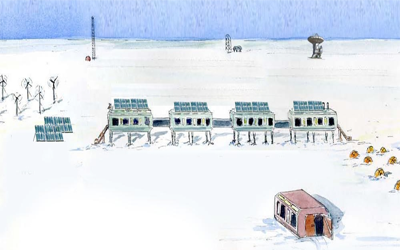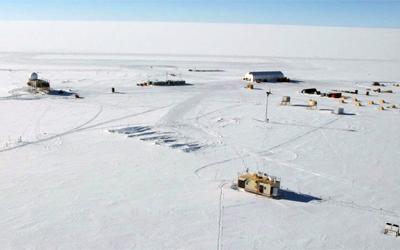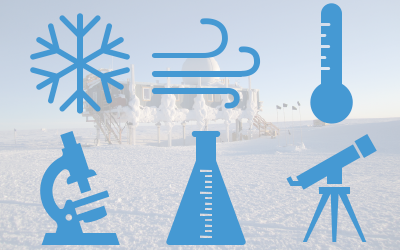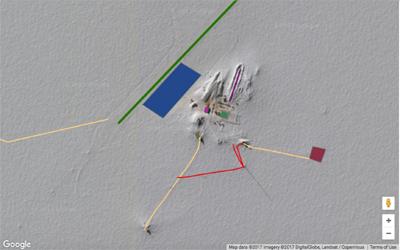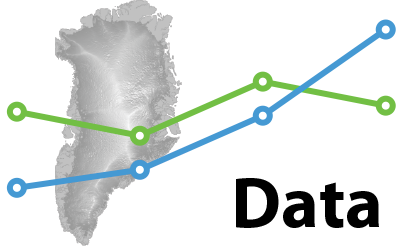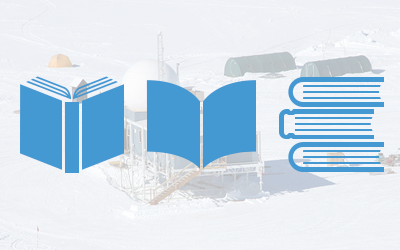The SCO has participated in both formal and informal planning discussions related to maintaining, upgrading, and even redeveloping Summit Station since SCO was created. In summer 2017 RSL reactivated a formal Summit Long Range Facility Plan (LRFP) working group, partly in response to the March, 2017 Summit Station Science Summit as well as organizational changes within RSL. The active working group includes key individuals from RSL, Battelle ARO, QED, CRREL, and SCO. Additional input from science stakeholders is welcome. Currently, participants from SAO/GLT, NASA/ICESat, NOAA/GMD and the University of Colorado are consulting and welcome to join any relevant discussions.
First goal of the LRFP is to provide a complete update of the 2015, Summit Station Planning Document. We will post the new version here as soon as RSL approves release for community comments.
The LRFP is guided by the recently revised NSF Vision for Research Support & Logistics at Summit Station, copied below.
NSF Vision for Research Support & Logistics at Summit Station
Summit Station will become an efficient, flexible observing platform supporting seasonal campaigns for research and training as well as a variety of research fields utilizing state-of-the-art technology to enable year-round measurements made autonomously or with minimal human presence.
Background: Summit Station will remain an important polar research station contributing to an arctic network of observations and supporting cutting-edge research in a variety of disciplines by international teams, as well as providing a training platform for next generation research scientists. Observations at Summit Station contribute to a broad scientific understanding of the atmosphere and cryosphere including: tracking atmospheric pollution and Arctic-wide transport, snow chemistry, air-snow interactions, weather prediction, understanding changes in the Arctic climate system, the surface mass balance of the Greenland Ice Sheet, and the physics of snow and ice. Research involving observations of the atmosphere, cryosphere, space weather, particle physics, seismology of the ice sheet, and astronomy and astrophysics is potentially transformative and improves our understanding of the Earth, the influence of the Sun on Earth’s atmosphere, and the origins of the Universe. Building on more than thirty years as a research site, Summit Station is anticipated to continue to serve as a platform for these studies and as a test bed for new sensors and technology designed for remote operation or autonomous exploration in isolated regions and harsh environments. Continued improvements in communications technology will soon allow for scientists and the public to fully participate in experiments and events at Summit Station from anywhere.
Summit Station will be maintained, augmented, and upgraded as a research support and infrastructure hub subject to available funds and successfully competed NSF science projects as well as research funded by other U.S. and International organizations, as appropriate. The vision includes the following objectives:
- Preserve Summit Station’s clean air and snow sectors for science investigating processes in the coupled atmosphere – cryosphere – climate systems, while also providing and allocating space for science not reliant on pristine air and snow
- Continue to serve as a platform for training next generation scientists
To achieve this vision, we will:
- Develop a flexible site with facilities that meet changing requirements through designs aimed towards efficiency and safety that allow for easy reconfiguration of space and autonomous operation of heat, energy, and other requirements, including the capability to safely and easily winterize all infrastructure for unmanned periods and subsequently reactivate it
- Assure the preservation of clean air and clean snow science sectors through an actively monitored clean air policy
- Provide scalability to allow for future project additions or reductions, depending on the demands of the NSF science community
- Implement systems that allow for autonomous data collection
- Develop the capability to support funded research during unmanned periods
Scientific Vision for Summit Station, Greenland
Over the coming decades, research conducted at Summit Station will provide unique insights into Arctic-wide and global climate processes and answer transformative science questions about the role of the Greenland Ice Sheet in the global climate system. Summit will remain the only high altitude, high latitude, inland, year-round observatory in the Arctic. Summit offers immediate access to the free troposphere and is relatively free of local influences that could corrupt atmospheric observations. As such, it is ideally suited for studies aimed at identifying and understanding long-range, intercontinental transport and its influences on the ice sheet surface, boundary layer, and overlying atmosphere. The pristine and remote location in a year-round dry snow and ice region provides an optimal facility for energy and surface mass balance, radiation measurements, and remote sensing validation studies. Summit is also a prime site for astronomy and astrophysics research due to its high altitude and dry, stable atmosphere.
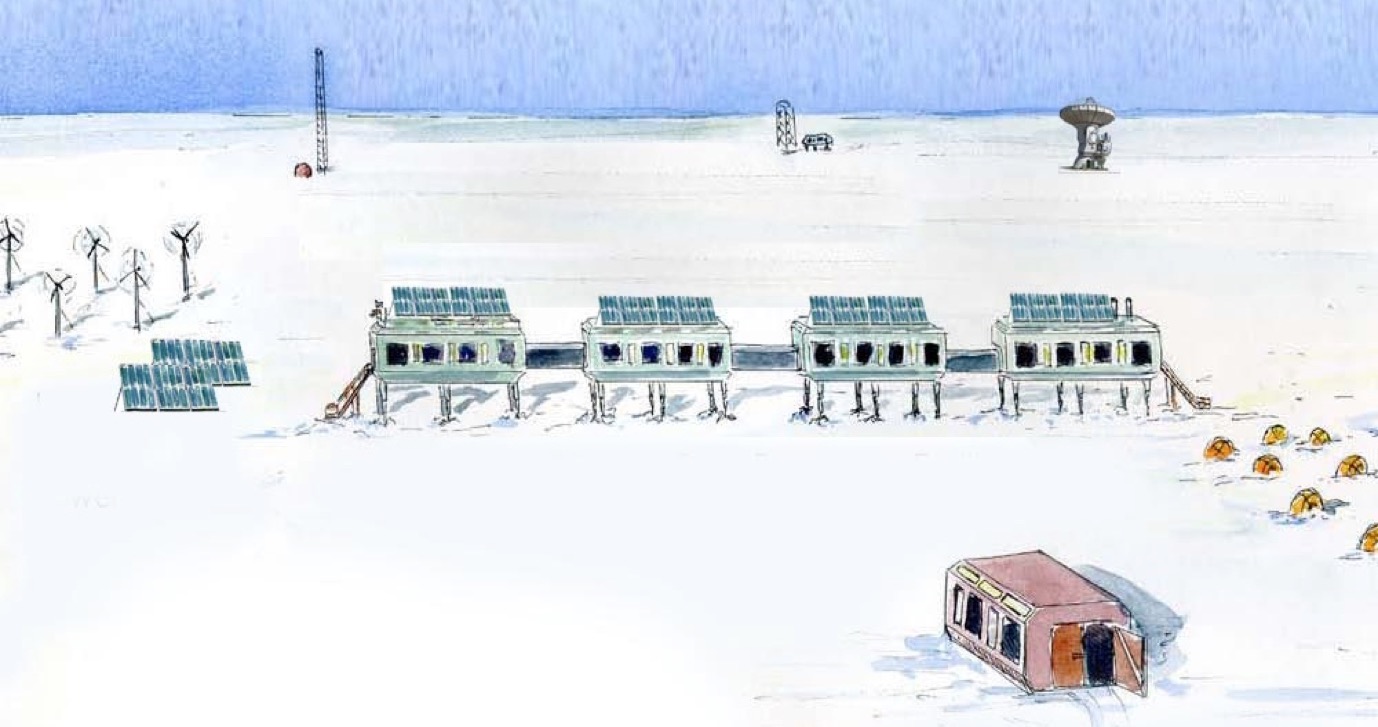
Artist’s conception of a future Summit Station, including renewable energy (wind and solar), elevated, modular buildings, and moveable ground structures that scale to the population.
Summit is the site of the GISP2 ice core, a 3053m ice core drilled down to bedrock in 1993 with high-resolution samples of the atmosphere dating back 140,000 years before present, against which atmospheric and meteorological observations extending from 1989 to the present can be compared and understood. Summit, amid changes in the climate both in the Arctic and across the globe, will become a critical, perhaps the sole, comparison site in the northern hemisphere for studies of large-scale climate processes. Operated as a minimalist research station hundreds of miles from any settlement, it will remain free of local and regional pollution for decades to come. Maintaining the pristine nature of Summit is of upmost importance to continue highly sensitive observations of the atmosphere and snow. Current and planned efforts to reduce local impacts include maintenance of clean air and clean and undisturbed snow zones, deployment of clean, renewable energy sources and development of efficient, autonomous scientific instrumentation in energy-efficient structures. Placing camp structures on elevated, jackable platforms, reducing the overall footprint of the station, and decreasing aircraft transport to Summit will reduce the impact of station operations on the site while also reducing operational costs and gaining efficiency.
Investigations into tropospheric chemistry, snow chemistry, air-snow exchange, cloud physics, and climate processes will remain prominent, with research activities expanding in seismology, space weather, particle physics, atmospheric physics, astronomy, and astrophysics. Summit will serve as a test bed for new technology designed for remote operation and remote sensing in harsh environments. Core scientific values of Summit as a research facility are to provide:
- A platform that allows collection of the highest quality observations to answer key questions about climate processes in the northern hemisphere,
- Year-round observations of key climatic and atmospheric variables that are changing and also driving change in Greenland, the Arctic, and the entire northern hemisphere,
- Access to a pristine, year-round, and one of a kind research location for transformative, interdisciplinary research across a range of scientific fields, while being representative of much of the Greenland Ice Sheet.
- A platform for training next generation scientists
The scientific vision for Summit in the coming decades is for it to become a pre-eminent polar research site integrated into an arctic network of observatories and supporting cutting edge research across disciplines. Achieving this goal will require collaboration, innovation, creativity, and a commitment to development of the station to a more efficient, modular, and flexible platform, while maintaining a clean air sector for atmospheric measurements, limiting fossil fuel consumption, and moderating resource use and activity at the site. The coming challenge is to maintain the unique characteristics of Summit. Expanding multi-disciplinary, multi-agency, and international scientific research in the Arctic and at Summit specifically requires increased cooperation and communication among agencies and research communities.
2 August 2017
The Science Coordination Office (SCO) for Summit Station and the Greenland Traverse

